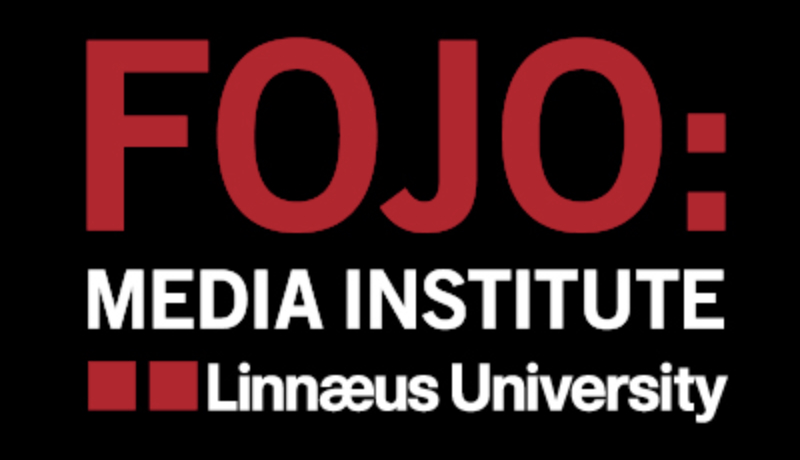
Media Helping Media is hosted by the Fojo Media Institute and is one of its official training resources.
From our BASIC JOURNALISM section
The use of adjectives and adverbs in journalism
When it comes to writing - not just news writing but any kind of writing - adjectives and adverbs have a bad reputation.
How to spot a news story
What are the telltale signs that help journalists distinguish fact from fiction, and how do they know when they have uncovered an important news story?
From our EDITORIAL ETHICS section
Is your journalism ethical?
If the content you produce pushes an agenda, spins a line, favours a sector of society, is manipulated by subjective values, you are probably producing PR copy or even propaganda.
Accuracy in journalism
A media organisation will be judged on the accuracy and reliability of its journalism, which must be well-sourced, supported by strong evidence, examined and tested, clear and unambiguous. Verified facts must form the basis of all news, not rumour or speculation.
From our ADVANCED JOURNALISM section
How to set online news priorities
Increasingly, news websites are the product of a converged newsroom operating as a content factory and delivering information to whatever device the user turns to in order to access information.
How to handle a breaking news situation
An example of how an international TV and digital news organisation deals with breaking and developing news, including when and how to update information shared on all the station's channels.
 Unfortunately, Facebook has decided to disable our Media Helping Media Facebook group. Our Facebook page is still live.
Unfortunately, Facebook has decided to disable our Media Helping Media Facebook group. Our Facebook page is still live.
 Do you have any wisdom to share with those without access to formal training? If so please get in touch.
Do you have any wisdom to share with those without access to formal training? If so please get in touch.
 Media Helping Media (MHM) provides free training resources for those starting off in journalism. Read more …
Media Helping Media (MHM) provides free training resources for those starting off in journalism. Read more …
 The content on Media Helping Media (MHM) is released via Creative Commons BY NC SA 4.0. Please read the MHM copyright terms.
The content on Media Helping Media (MHM) is released via Creative Commons BY NC SA 4.0. Please read the MHM copyright terms.
Avoiding the pitfalls of investigative journalism
Producing a piece of investigative journalism to international standards can be a daunting prospect. This guide is to help journalists avoid some of the pitfalls and problems often encountered.
The mindset for investigative journalism
The investigative mindset is responsible for solving more information mysteries than probably any other factor. If you haven’t started writing down your best strategies now might be the time to start.
Why would anyone want to talk to a journalist?
There may be many reasons why someone will agree to open up to a reporter, and some will be beyond their control. It's worth taking time to try to figure out the motives before interviewing them.
Newsgathering tips for producing great content
The newsgathering process involves sourcing ideas, planning coverage, assigning teams, structuring packages, monitoring the web, working in the field - and coming back alive and well.
Prioritising production with the content value matrix
How to prioritise newsroom effort
There are many demands on a newsroom. There is the routine flow of news releases and stage-managed events that need to...
Proactive journalism, ensuring issues are fully explored
Informing the public debate
Sometimes journalists become lazy. When this happens, the news they produce becomes superficial and shallow. They take information at face value....
Managing people and setting objectives
For most staff, personal objectives are the most important, but they also need to know about the wider objectives. It is the line manager's responsibility to set personal objectives to help employees contribute fully.
Strategic forward planning for media organisations
This module looks at how media organisations need to plan ahead to produce original content that informs the public debate and covers the issues of most concern to the target audience.
The uneasy but essential evolution of news
The audience, empowered with tools to choose, create, enrich and share, is the new superuser offering alternative sources and channels of information to those of mainstream providers.
Photo journalism – scenario
Scenario: You arrive at a border crossing and see a child sitting by the roadside crying. You think it's been abandoned and take a picture. You alert the newsdesk. But it transpires it's just lost its mother and stops crying when the mother arrives. What should you do?
Editorial impartiality – scenario
Allegations are made about an incompetent medical surgeon and a subsequent cover up at a hospital. People have died. Your news editor asks you to investigate. The only problem is – the surgeon is your cousin. What do you do?
Journalistic integrity – scenario
You are a political broadcast journalist and are invited to speak at public event where the organisers want you to explain the role of the journalist in covering elections. After the event they offer you a gift, and ask whether you would be prepared to do some media training for politicians. What do you do?
Wanted, your media know-how
Are you a journalist, media manager or media trainer with some tips to share for the benefit of others? If so, please consider submitting a training module to Media Helping Media.
Five essential steps for media training
For international media training to be successful, tried, tested and proven case studies from a similar region are needed. Theory has limited value, as do examples of what works in the West.
How to design a successful media training plan
A well-designed media training plan could make the difference between the success and the failure of a media business. Get it wrong and you could be adding to the problems you were asked to address.




